| In this lab students learn a variety of noninvasive techniques for measuring pulmonary and cardiovascular function in humans. They can use any of these in the next lab for their independent investigation of exercise physiology. Here students are measuring blood pressure with a stethoscope and a sphygmomanometer (which most students pronounce "blood pressure cuff"). |
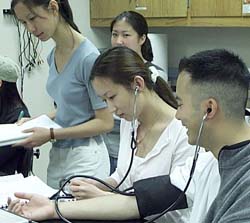 |
| A pulse oximeter allows you to measure heart rate and the % saturation of your blood with oxygen by attaching the clip to your finger or earlobe. |
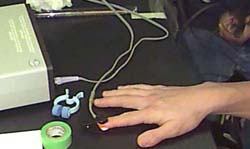 |
| To measure oxygen consumption and metabolic rate, first collect your expired air for 2-3 minutes by breathing through a 3-way valve. The exhaled air flows through the hose into the 100-liter Douglas bag. |
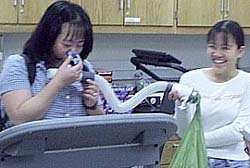 |
| Next, measure the % oxygen in the collected sample with an oxygen analyzer. |
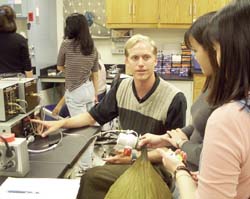 |
| Finally, measure the volume of the collected sample by squeezing all of the air through a Parkinson-Cowan gas meter. With these data, you can calculate your rate of oxygen consumption (in ml oxygen per minute) and metabolic rate (in kcal/minute). |
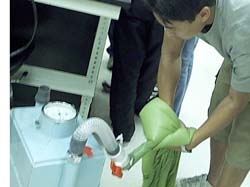 |